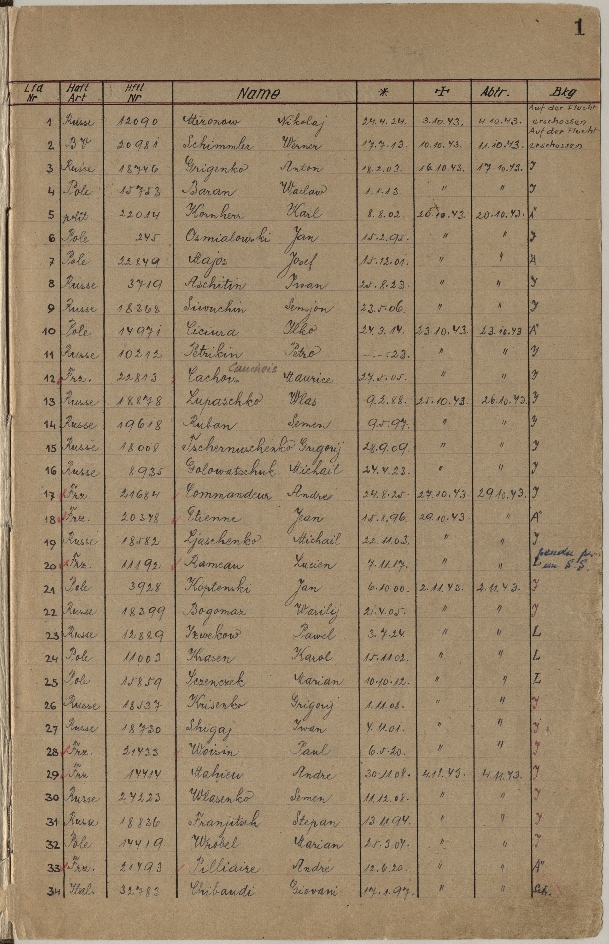
Drawing of the French inmate Maurice de la Pintière, June 1945
(De la Pintière family)

(KZ-Gedenkstätte Mittelbau-Dora)
The stuffy, damp, cold air in the tunnel system and the inadequate hygienic conditions in the sleeping quarters fostered the rampant spread of diseases, including tuberculosis, pneumonia, and typhus. The lack of protective clothing for the inmates led to frequent injuries like fractures and contusions. For the SS, exploiting the inmates’ labor was first and foremost. Their health was of interest only as a measure of their ability to work.
A provisional infirmary was quickly set up, which was first located in tents outside the tunnels, then moved inside. For many of the inmates it was too little, too late. They died of illnesses, injuries, and exhaustion. The first death occurred in October, and by March 1944 at least 3,000 inmates had perished.


